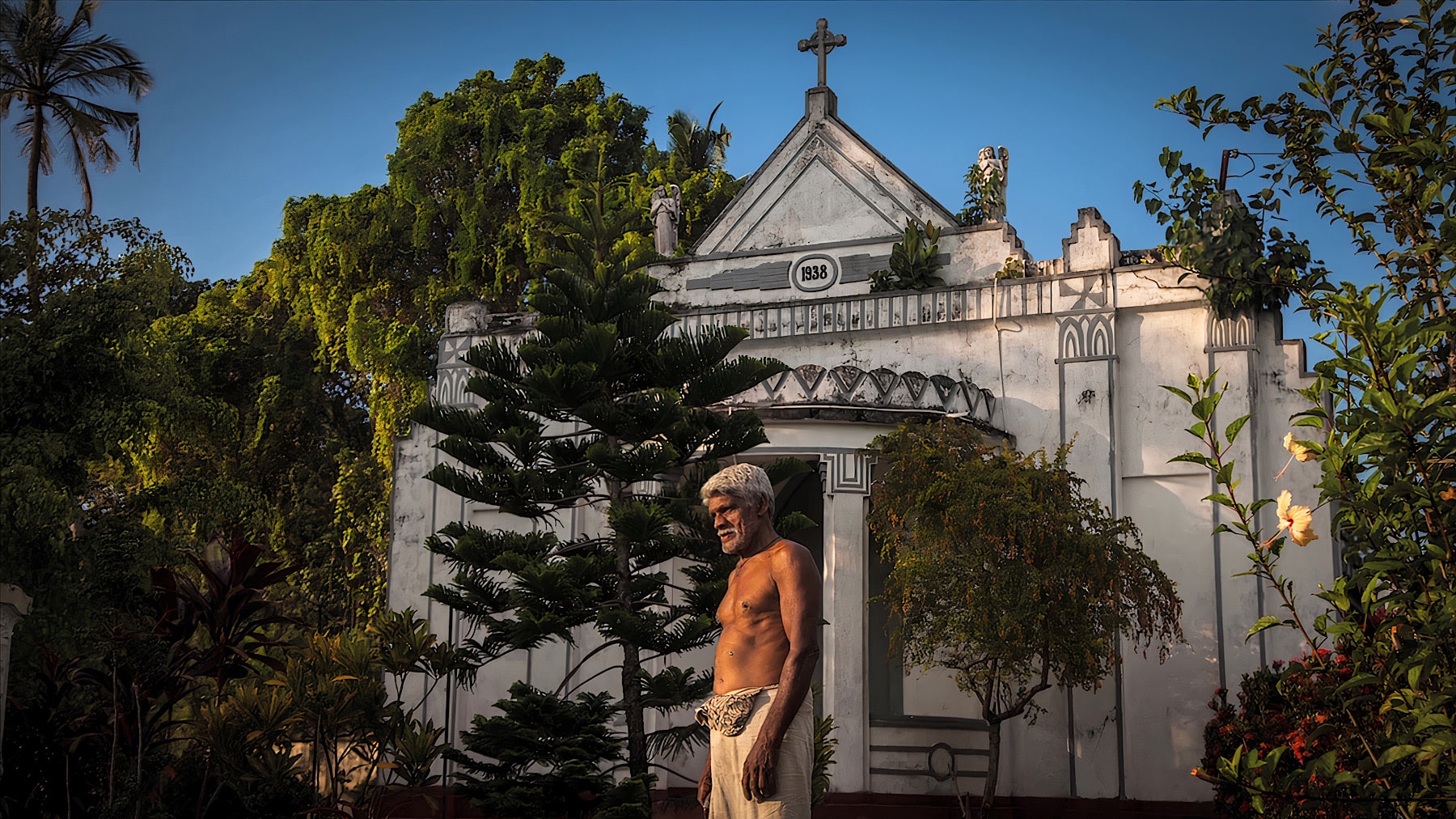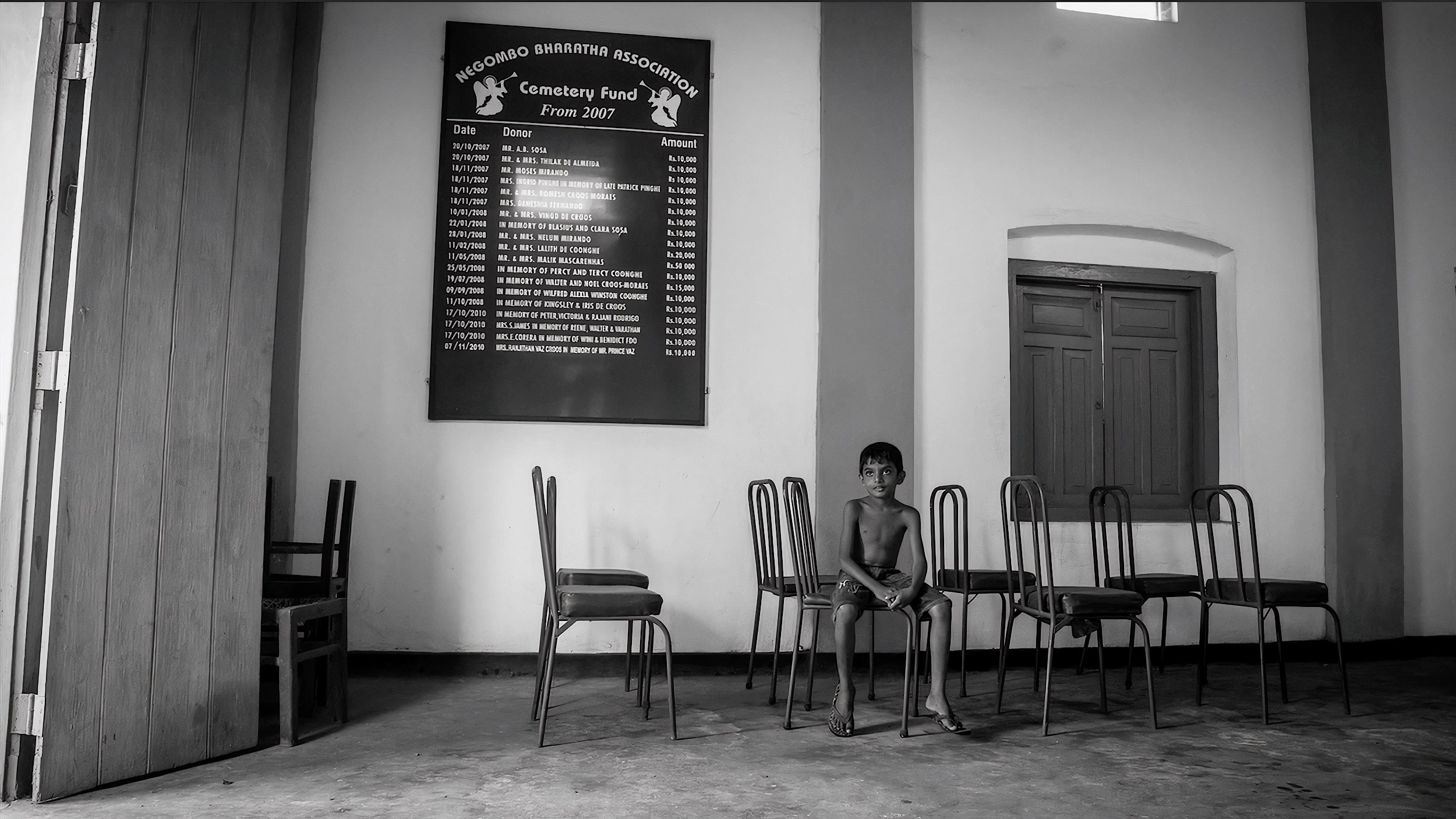The descendant
Selvam Croos Moraes
A member of Negombo’s Bharatha community, Selvam Croos Moraes reminisces about his discovery of an archive photograph of the Donoughmore Commission, in which his father was a staff member. He talks about his distinctive community and the challenges he faced in getting the photograph recognised as part of Sri Lankan history.


Transcript and translations
Language
Subjects discussed
Fourth from the right of the picture…This is my father
Fourth from the right of the picture…This is my father.
One Mr Christophalus was there in the staff. Then one Mr Deva Pathirana was there. And Lord Donoughmore was there. Fourth from the right of the picture…This is my father.
“A photograph of the Donoughmore Commission took with his staff… took together with his staff taken in front of the Treasury as far back as ’27, 1927-29 was in my possession. With staff including the 6th Earl of Donoughmore, whose name is connected with the Ceylon Constitution as an architect of the Donoughmore Constitution of 1931. My father happened to work on the staff of the Commission. In view of the historical and cultural importance of this item of history, the place for this should be in the Colombo Museum.”
It was just hanging around in the house and I thought that this was something unique and I gave it to Plâte to get it redone. I knew that it was going to be valuable. He was actually very proud of it. So I wrote to the public library. The Archives. The people whom I met first, they were not worried whether this was going to be any part of the history of Sri Lanka. “What does that got to do with us?”
And I’ve been driven from pillar to post. There was nobody to help me. So I thought the best thing is for me to write to the House of Lords. And then they wrote to me back saying that these Donoughmore papers are with the University of Dublin, with the Earl of…present Earl of Donoughmore,
They have catalogued it in such a way that to say that I have donated this from Sri Lanka. I just felt how a foreigner could so recognise me, whereas I didn’t get that thing back when I went to our own museum. Two different responses.
The 1940 Donoughmore Commission recognised us as one of the communities. As Bharathas. Our community was given a separate time to come and voice our identity.
He was a smart gentleman, very honest, loyal man. I must tell you that he didn’t have any executive powers. No, not at all. He was only a member of the staff. Maybe he could have definitely spoken to some other people and said that this…please give us an appointment. There is a community like this. I belong to that community. He might have told…I can’t definitely say that he did it. Like, for example, anybody knowing the big boss will tell something. “I say, who.. from where are you?” He will ask. “I’m a Bharatha…” “Oh, why don’t you ask them to come? I like to have the opinion of all these communities.”




Comments
Leave a comment